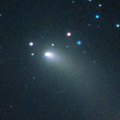
|
It brightened up to 9-10 mag from December to February. Juan Jose Gonzalez reported that it was bright as 9.3 mag on Feb. 21. However, Didac Mesa Romeu reported the condensation got weaker on Feb. 22. In the Northern Hemisphere, it stays extremely low after this. In the Southern Hemisphere, it is not observable until late March.
Date(TT) R.A. (2000) Decl. Delta r Elong. m1 Best Time(A, h)
Mar. 3 21 35.79 8 49.6 1.349 0.617 25 10.8 5:03 (264, 7)
Mar. 10 21 37.81 3 54.2 1.404 0.684 26 11.3 4:54 (270, 8)
|
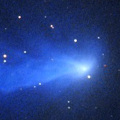
|
Now it is 10.5 mag (Feb. 17, Juan Jose Gonzalez). It will stay bright as 11 mag for a long time until spring. In the Southern Hemisphere, it will be unobservable soon. In the Northern Hemispehre, it stays observable for a long time until the comet fades out. But it will be getting lower gradually after this.
Date(TT) R.A. (2000) Decl. Delta r Elong. m1 Best Time(A, h)
Mar. 3 4 3.57 30 46.2 2.636 2.699 82 10.8 19:20 ( 89, 65)
Mar. 10 4 7.94 32 25.6 2.718 2.681 77 10.8 19:26 ( 96, 59)
|
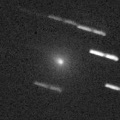
|
Now it is 10.4 mag (Feb. 17, Juan Jose Gonzalez). It will fade out after this. In the Northern Hemisphere, it stays observable for a long time in the evening sky. In the Southern Hemisphere, it will be getting higher gradually.
Date(TT) R.A. (2000) Decl. Delta r Elong. m1 Best Time(A, h)
Mar. 3 2 12.96 4 56.7 1.351 1.060 51 11.7 19:20 ( 74, 29)
Mar. 10 2 46.66 6 35.4 1.382 1.110 52 12.1 19:26 ( 76, 30)
|
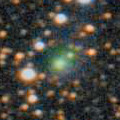
|
Now it is bright as 11.0 mag (Feb. 21, Juan Jose Gonzalez). It is expected to brighten up to 9 mag in summer. In the Northern Hemisphere, it stays observable until summer while the comet will be brightening. It is appear in the morning sky also in the Southern Hemisphere.
Date(TT) R.A. (2000) Decl. Delta r Elong. m1 Best Time(A, h)
Mar. 3 19 15.15 0 56.0 3.303 2.855 55 12.2 5:03 (293, 31)
Mar. 10 19 20.71 0 9.6 3.171 2.808 59 12.0 4:54 (296, 32)
|
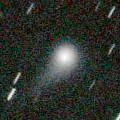
|
Now it is 12.1 mag (Feb. 17, Juan Jose Gonzalez). It stays 12 mag for a long time until spring in 2019. In the Northern Hemisphere, it stays observable in good condition while the comet will be brightening gradually. In the Southern Hemisphere, it is not observable until October.
Date(TT) R.A. (2000) Decl. Delta r Elong. m1 Best Time(A, h)
Mar. 3 13 57.89 78 28.6 2.616 3.027 104 12.3 3:18 (180, 47)
Mar. 10 12 33.10 80 19.4 2.602 2.994 103 12.2 1:28 (180, 45)
|
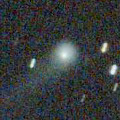
|
Now it is very bright as 12.1 mag (Feb. 16, Toshihiko Ikemura, Hirohisa Sato). It will be observable at 12-13 mag for a long time from 2017 to 2018. In the Southern Hemisphere, it will be hardly observable after this.
Date(TT) R.A. (2000) Decl. Delta r Elong. m1 Best Time(A, h)
Mar. 3 16 23.25 39 59.7 3.423 3.731 100 13.0 5:03 (234, 81)
Mar. 10 16 15.51 42 42.7 3.355 3.733 104 12.9 4:54 (196, 82)
|
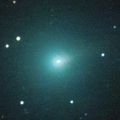
|
It brightened up to 9.2 mag from November to December (Nov. 16, Juan Jose Gonzalez). Now it is fading. But it is bright as 12.4 mag still now (Feb. 10, Chris Wyatt). It stays observable in good condition until summer when it fades out.
Date(TT) R.A. (2000) Decl. Delta r Elong. m1 Best Time(A, h)
Mar. 3 14 32.40 2 49.3 1.037 1.803 125 13.3 3:51 ( 0, 58)
Mar. 10 14 31.32 3 22.2 1.028 1.848 132 13.6 3:22 ( 0, 58)
|

|
It is not observable now. It will appear in the morning sky in late March in the Southern Hemisphere, or in late April in the Northern Hemisphere.
Date(TT) R.A. (2000) Decl. Delta r Elong. m1 Best Time(A, h)
Mar. 3 22 21.00 -7 13.4 6.772 5.792 8 13.9 5:03 (271,-11)
Mar. 10 22 26.30 -6 37.9 6.752 5.791 13 13.9 4:54 (272, -8)
|

|
It brightened up to 7.1 mag from May to June in 2017 (June 21, Juan Jose Gonzalez). Now it is fading. It has already faded down to 12.9 mag (Jan. 17, Chris Wyatt). In the Southern Hemisphere, it stays observable for a long time after this. However, it will be extremely low from January to March. It will never be observable again in the Northern Hemisphere.
Date(TT) R.A. (2000) Decl. Delta r Elong. m1 Best Time(A, h)
Mar. 3 23 23.65 -47 18.2 4.292 3.600 40 14.2 19:20 ( 51,-31)
Mar. 10 23 36.67 -46 33.0 4.338 3.666 42 14.3 19:26 ( 54,-34)
|
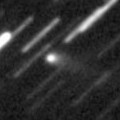
|
Now it is 13.8 mag (Feb. 10, Chris Wyatt). It stays 14 mag for a while. It stays observable in the evening sky until spring.
Date(TT) R.A. (2000) Decl. Delta r Elong. m1 Best Time(A, h)
Mar. 3 3 5.15 -4 16.0 2.392 2.125 62 14.2 19:20 ( 57, 33)
Mar. 10 3 15.39 -0 44.2 2.493 2.155 58 14.4 19:26 ( 64, 31)
|
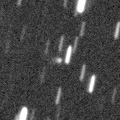
|
Now it is 15.6 mag (Feb. 18, Yuji Ohshima). It will brighten up to 9 mag in summer. However, it is hardly observable when it is bright. In the Northern Hemisphere, it is observable only until March when it brightens up to 14 mag. In the Southern Hemisphere, it is observable from July to September, but it locates in extremely low.
Date(TT) R.A. (2000) Decl. Delta r Elong. m1 Best Time(A, h)
Mar. 3 0 35.39 40 33.7 2.846 2.385 52 15.0 19:20 (122, 27)
Mar. 10 0 49.04 39 9.5 2.837 2.295 48 14.9 19:26 (123, 23)
|
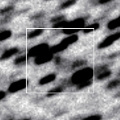
|
Now it is 17.2 mag (Jan. 14, iTelescope Observatory, Siding Spring). It will be observable at 14 mag in good condition from spring to summer.
Date(TT) R.A. (2000) Decl. Delta r Elong. m1 Best Time(A, h)
Mar. 3 18 47.07 -30 13.4 1.945 1.721 62 15.2 5:03 (321, 12)
Mar. 10 19 9.37 -29 39.9 1.877 1.699 64 15.0 4:54 (320, 12)
|
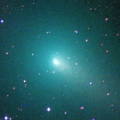
|
It brightened up to 8.1 mag in autumn (Oct. 3, Juan Jose Gonzalez). Now it is fading. It has already faded down to 16.6 mag (Feb. 13, Toshihiko Ikemura, Hirohisa Sato). In the Northern Hemisphere, it stays observable in good condition for a long time. In the Southern Hemisphere, it will never be observable again after this.
Date(TT) R.A. (2000) Decl. Delta r Elong. m1 Best Time(A, h)
Mar. 3 6 34.61 74 25.6 1.953 2.386 103 15.2 19:53 (180, 51)
Mar. 10 6 55.37 72 14.4 2.058 2.453 101 15.5 19:46 (180, 53)
|
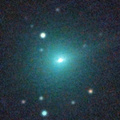
|
It brightened up to 9.7 mag in November (Nov. 16, Juan Jose Gonzalez). Now it is fading rapidly. It has already faded down to 15.5 mag (Feb. 12, Toshihiko Ikemura, Hirohisa Sato).
Date(TT) R.A. (2000) Decl. Delta r Elong. m1 Best Time(A, h)
Mar. 3 16 38.99 -11 54.2 1.445 1.783 92 15.5 5:03 (342, 41)
Mar. 10 16 44.96 -12 12.5 1.425 1.841 97 15.9 4:54 (346, 42)
|
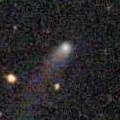
|
Now it is 15.9 mag (Feb. 12, Toshihiko Ikemura, Hirohisa Sato). It stays 16 mag for a long time from 2017 to 2018. It is observable in excellent condition in the Northern Hemisphere. It locates very low in the Southern Hemisphere.
Date(TT) R.A. (2000) Decl. Delta r Elong. m1 Best Time(A, h)
Mar. 3 7 30.26 42 47.5 4.777 5.379 122 15.6 20:46 (180, 82)
Mar. 10 7 23.70 43 14.8 4.889 5.387 115 15.6 20:12 (180, 82)
|
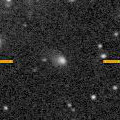
|
Now it is 16.3 mag (Feb. 18, Toshihiko Ikemura, Hirohisa Sato). It is expected to brighten up to 13-14 mag from 2018 to 2019. In the Northern Hemisphere, it stays observable in good condition for a long time. In the Southern Hemisphere, it is not observable until summer.
Date(TT) R.A. (2000) Decl. Delta r Elong. m1 Best Time(A, h)
Mar. 3 19 35.78 39 13.2 4.733 4.408 65 15.8 5:03 (247, 45)
Mar. 10 19 37.79 39 39.0 4.653 4.367 67 15.7 4:54 (247, 48)
|

|
It stays 15 mag from 2018 to 2019, and it will be observable for a long time in the Southern Hemisphere. In the Northern Hemisphere, it will never be observable again.
Date(TT) R.A. (2000) Decl. Delta r Elong. m1 Best Time(A, h)
Mar. 3 14 9.09 -60 6.3 4.543 4.858 102 15.9 3:28 ( 0, -5)
Mar. 10 14 5.56 -61 33.0 4.442 4.824 106 15.8 2:57 ( 0, -7)
|

|
Now it is 15.7 mag (Feb. 7, Alexander Baransky). It will be observable at 16 mag in good condition from winter to spring.
Date(TT) R.A. (2000) Decl. Delta r Elong. m1 Best Time(A, h)
Mar. 3 11 48.35 11 16.0 2.569 3.539 165 15.9 1:07 ( 0, 66)
Mar. 10 11 44.09 11 45.9 2.557 3.540 170 15.9 0:36 ( 0, 67)
|
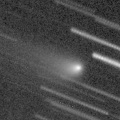
|
Appearing in the morning sky. It is fading now. But it stays 16 mag until summer.
Date(TT) R.A. (2000) Decl. Delta r Elong. m1 Best Time(A, h)
Mar. 3 19 24.05 -21 46.0 3.830 3.324 52 16.1 5:03 (309, 13)
Mar. 10 19 22.95 -22 7.2 3.749 3.364 59 16.1 4:54 (312, 16)
|

|
It will brighten up to 16 mag in spring. In the Southern Hemisphere, it stays observable until August, but it will be unobservable after that. In the Northern Hemisphere, it stays unobservable until June, but it will be observable in good condition after that.
Date(TT) R.A. (2000) Decl. Delta r Elong. m1 Best Time(A, h)
Mar. 3 19 44.54 -47 4.2 1.784 1.493 56 16.5 5:03 (324, -8)
Mar. 10 20 20.77 -45 51.8 1.728 1.448 56 16.4 4:54 (321, -9)
|

|
Now it is 16.2 mag (Feb. 13, Toshihiko Ikemura, Hirohisa Sato). It will be fading slowly after this.
Date(TT) R.A. (2000) Decl. Delta r Elong. m1 Best Time(A, h)
Mar. 3 10 24.28 6 34.2 8.622 9.605 172 16.4 23:39 ( 0, 62)
Mar. 10 10 22.77 6 54.5 8.645 9.609 165 16.5 23:10 ( 0, 62)
|

|
Now it is 17.3 mag (Feb. 20, Toshihiko Ikemura, Hirohisa Sato). It stays 17 mag in 2018.
Date(TT) R.A. (2000) Decl. Delta r Elong. m1 Best Time(A, h)
Mar. 3 3 24.53 1 41.7 6.967 6.660 68 16.4 19:20 ( 57, 40)
Mar. 10 3 27.78 2 5.1 7.096 6.691 62 16.5 19:26 ( 64, 35)
|
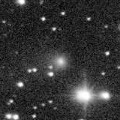
|
Now it is 16.1 mag (Feb. 18, Toshihiko Ikemura, Hirohisa Sato). It will be fading after this. In the Northern Hemisphere, it stays observable in the northern sky for a long time. It is not observable at all after this in the Southern Hemisphere.
Date(TT) R.A. (2000) Decl. Delta r Elong. m1 Best Time(A, h)
Mar. 3 21 29.19 73 10.4 3.587 3.574 81 16.5 5:03 (200, 35)
Mar. 10 21 43.18 75 10.3 3.627 3.604 80 16.5 4:54 (198, 35)
|
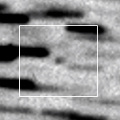
|
Now it is 17.3 mag (Feb. 23, Toshihiko Ikemura, Hirohisa Sato). It will brighten rapidly after this, and it will brighten up to 11 mag from summer to autumn. It is observable in excellent condition in the Southern Hemisphere. It locates somewhat low in the Northern Hemisphere.
Date(TT) R.A. (2000) Decl. Delta r Elong. m1 Best Time(A, h)
Mar. 3 19 12.71 -18 15.6 2.784 2.358 54 16.9 5:03 (308, 18)
Mar. 10 19 26.52 -18 4.5 2.689 2.332 58 16.5 4:54 (309, 18)
|
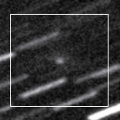
|
Now it is 17.6 mag (Feb. 18, Martin Masek). It will brighten rapidly after this, and will brighten up to 12 mag from April to June. In the Southern Hemisphere, it stays observable in excellent condition. In the Northern Hemisphere, it will be unobservable from April to June when the comet becomes brightest.
Date(TT) R.A. (2000) Decl. Delta r Elong. m1 Best Time(A, h)
Mar. 3 16 59.72 -29 38.7 1.386 1.636 85 16.9 5:03 (342, 23)
Mar. 10 17 24.82 -31 51.6 1.293 1.584 86 16.6 4:54 (342, 21)
|

|
Now it is bright as 15.7 mag (Feb. 11, Catalina Sky Survey). It will fade out rapidly after this, and it will be fainter than 18 mag in late April.
Date(TT) R.A. (2000) Decl. Delta r Elong. m1 Best Time(A, h)
Mar. 3 13 19.99 24 47.4 0.459 1.378 140 16.7 2:38 ( 0, 80)
Mar. 10 13 24.22 24 48.6 0.462 1.393 143 16.8 2:15 ( 0, 80)
|

|
Now it is 16.1 mag (Feb. 18, Toshihiko Ikemura, Hirohisa Sato). It will be fading gradually after this, and it will be fainter than 18 mag in autumn. In the Northern Hemisphere, it stays observable in good condition for a long time. In the Southern Hemisphere, it will never be observable again.
Date(TT) R.A. (2000) Decl. Delta r Elong. m1 Best Time(A, h)
Mar. 3 21 20.45 61 59.5 7.202 6.949 71 16.8 5:03 (214, 33)
Mar. 10 21 31.50 62 35.6 7.246 6.969 70 16.8 4:54 (213, 34)
|
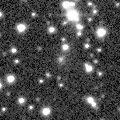
|
Now it is 16.6 mag (Feb. 13, Toshihiko Ikemura, Hirohisa Sato). It will pass the perihelion in 2019. However, it has not been brightening since the discovery in 2010. It is observable in good conditioin in the Northern Hemisphere. It is not observable for a long time in the Southern Hemisphere.
Date(TT) R.A. (2000) Decl. Delta r Elong. m1 Best Time(A, h)
Mar. 3 5 38.94 75 3.3 8.488 8.710 99 16.8 19:20 (178, 50)
Mar. 10 5 41.03 74 40.1 8.547 8.700 95 16.9 19:26 (174, 50)
|
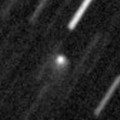
|
Now it is 16.6 mag (Feb. 26, Catalina Sky Survey). It is observable at 17 mag in good condition from winter to spring.
Date(TT) R.A. (2000) Decl. Delta r Elong. m1 Best Time(A, h)
Mar. 3 12 25.96 15 28.8 4.590 5.509 155 16.8 1:45 ( 0, 70)
Mar. 10 12 19.76 17 1.1 4.586 5.532 160 16.9 1:11 ( 0, 72)
|
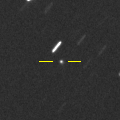
|
Now it is 17.3 mag (Feb. 13, Toshihiko Ikemura, Hirohisa Sato). It will brighten up to 15 mag in January, 2019. It stays observable in excellent condition in the Northern Hemispehre. It is observable only until June, 2018, in the Southern Hemisphere.
Date(TT) R.A. (2000) Decl. Delta r Elong. m1 Best Time(A, h)
Mar. 3 12 25.73 20 17.5 3.467 4.380 154 17.1 1:45 ( 0, 75)
Mar. 10 12 16.21 22 21.4 3.406 4.340 157 17.0 1:08 ( 0, 77)
|
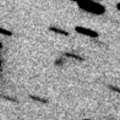
|
Now it is 17.5 mag (Jan. 27, Catalina Sky Survey). It stays observable at 17 mag in good condition for a while. It will be fainter than 18 mag in May.
Date(TT) R.A. (2000) Decl. Delta r Elong. m1 Best Time(A, h)
Mar. 3 15 20.37 -7 36.3 1.947 2.494 111 17.1 4:39 ( 0, 47)
Mar. 10 15 22.17 -7 17.4 1.900 2.529 118 17.1 4:13 ( 0, 48)
|
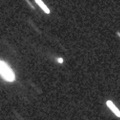
|
Now it is 16.2 mag (Feb. 25, Catalina Sky Survey). It will be fading gradually after this.
Date(TT) R.A. (2000) Decl. Delta r Elong. m1 Best Time(A, h)
Mar. 3 11 20.23 40 10.1 7.278 8.122 146 17.2 0:39 (180, 85)
Mar. 10 11 14.57 40 6.3 7.315 8.141 144 17.2 0:06 (180, 85)
|
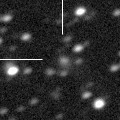
|
Now it is 16.9 mag (Feb. 13, Toshihiko Ikemura, Hirohisa Sato). It will be fainter than 18 mag in summer.
Date(TT) R.A. (2000) Decl. Delta r Elong. m1 Best Time(A, h)
Mar. 3 15 5.58 -17 59.3 5.771 6.227 113 17.2 4:24 ( 0, 37)
Mar. 10 15 4.95 -17 17.8 5.680 6.242 120 17.2 3:56 ( 0, 38)
|
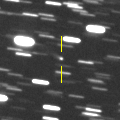
|
Now it is 17.4 mag (Feb. 12, Toshihiko Ikemura, Hirohisa Sato). It stays observable at 18 mag for a long time until 2019.
Date(TT) R.A. (2000) Decl. Delta r Elong. m1 Best Time(A, h)
Mar. 3 5 33.46 16 31.6 7.680 7.936 101 17.4 19:20 ( 22, 70)
Mar. 10 5 31.31 16 23.1 7.804 7.934 93 17.5 19:26 ( 43, 66)
|
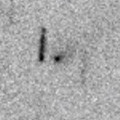
|
Now it is 17.4 mag (Feb. 13, Toshihiko Ikemura, Hirohisa Sato). It will be fading after this, and will be fainter than 18 mag in April.
Date(TT) R.A. (2000) Decl. Delta r Elong. m1 Best Time(A, h)
Mar. 3 9 30.11 -15 43.2 2.322 3.214 149 17.5 22:45 ( 0, 39)
Mar. 10 9 27.27 -15 23.9 2.384 3.254 145 17.6 22:15 ( 0, 40)
|
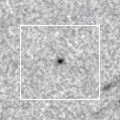
|
Now it is 17.6 mag (Feb. 21, Toshihiko Ikemura, Hirohisa Sato). It will brighten up to 17 mag and will be observable in good condition in spring.
Date(TT) R.A. (2000) Decl. Delta r Elong. m1 Best Time(A, h)
Mar. 3 13 11.34 -13 57.0 1.733 2.572 139 17.7 2:30 ( 0, 41)
Mar. 10 13 10.08 -13 53.3 1.672 2.564 147 17.5 2:01 ( 0, 41)
|
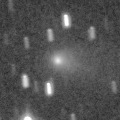
|
It brightened up to 14.8 mag from autumn to winter (Nov. 21, Hiroshi Abe). Now it is fading. It has already faded down to 17.1 mag (Feb. 12, Toshihiko Ikemura, Hirohisa Sato). It is observable in good condition in the Northern Hemisphere. It locates low in the Southern Hemisphere.
Date(TT) R.A. (2000) Decl. Delta r Elong. m1 Best Time(A, h)
Mar. 3 5 31.05 36 33.2 2.088 2.485 101 17.8 19:20 (106, 83)
Mar. 10 5 40.16 36 9.5 2.205 2.521 96 18.0 19:26 (100, 78)
|
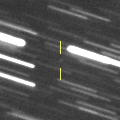
|
Now it is 19.3 mag (Feb. 21, Toshihiko Ikemura, Hirohisa Sato). It will brighten rapidly, and brighten up to 7 mag from August to September. In the Northern Hemisphere, it will be observable in excellent condition. In the Southern Hemisphere, it will be unobservable from July to August. But it will be observable in good condition before and after tha.
Date(TT) R.A. (2000) Decl. Delta r Elong. m1 Best Time(A, h)
Mar. 3 18 11.26 1 39.2 2.626 2.488 71 18.1 5:03 (306, 42)
Mar. 10 18 22.12 2 57.6 2.493 2.429 74 17.8 4:54 (307, 45)
|
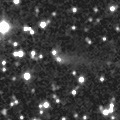
|
Now it is 18.0 mag (Feb. 18, Toshihiko Ikemura, Hirohisa Sato). It will be fading after this, and will be fainter than 18 mag in March. It is observable in excellent condition in the Northern Hemisphere. It locates low in the Southern Hemisphere.
Date(TT) R.A. (2000) Decl. Delta r Elong. m1 Best Time(A, h)
Mar. 3 5 13.86 33 28.6 3.186 3.466 97 17.8 19:20 ( 85, 80)
Mar. 10 5 19.37 33 16.2 3.306 3.489 92 18.0 19:26 ( 89, 74)
|
|
![]()
 C/2014 B1 ( Schwartz )
C/2014 B1 ( Schwartz ) C/2011 KP36 ( Spacewatch )
C/2011 KP36 ( Spacewatch ) C/2016 N4 ( MASTER )
C/2016 N4 ( MASTER ) 48P/Johnson
48P/Johnson 66P/du Toit
66P/du Toit P/2017 U6 ( PanSTARRS )
P/2017 U6 ( PanSTARRS ) C/2014 OE4 ( PanSTARRS )
C/2014 OE4 ( PanSTARRS ) C/2010 U3 ( Boattini )
C/2010 U3 ( Boattini ) C/2017 D3 ( ATLAS )
C/2017 D3 ( ATLAS ) C/2018 A3 ( ATLAS )
C/2018 A3 ( ATLAS ) 30P/Reinmuth 1
30P/Reinmuth 1 C/2014 R3 ( PanSTARRS )
C/2014 R3 ( PanSTARRS ) C/2017 E3 ( PanSTARRS )
C/2017 E3 ( PanSTARRS ) C/2015 XY1 ( Lemmon )
C/2015 XY1 ( Lemmon ) C/2016 T3 ( PanSTARRS )
C/2016 T3 ( PanSTARRS ) 143P/Kowal-Mrkos
143P/Kowal-Mrkos 145P/Shoemaker-Levy 5
145P/Shoemaker-Levy 5 21P/Giacobini-Zinner
21P/Giacobini-Zinner 90P/Gehrels 1
90P/Gehrels 1![]()




































